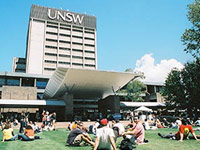| Introduction to the Identification of Intellectually Gifted Children - EDST5802 |
|
||||||||||||||||||||||||||||||||||||||||||||||

Description An introduction to some of the subjective and objective measures by which children of high intellectual potential can be identified and their abilities and achievements accurately assessed. Methods of identification including: behaviours which indicate possible giftedness; developmental indicators such as early speech, mobility and reading; teacher, parent peer and self nomination; and standardised tests of aptitude and achievement. Emphasises the use of a combination of approaches rather than a single measure. Attention to the recognition of different levels of giftedness, and to the identification of high potential in minority and disadvantaged groups including the physically handicapped, geographically isolated, Aboriginal children, and girls.
Note: EDST5800 can be taken as a corequisite. Learning Outcomes It is anticipated that students who successfully complete this course will be able to:
Assessment
|
|||||||||||||||||||||||||||||||||||||||||||||||

| Contacts | Library | myUNSW | WebCT |